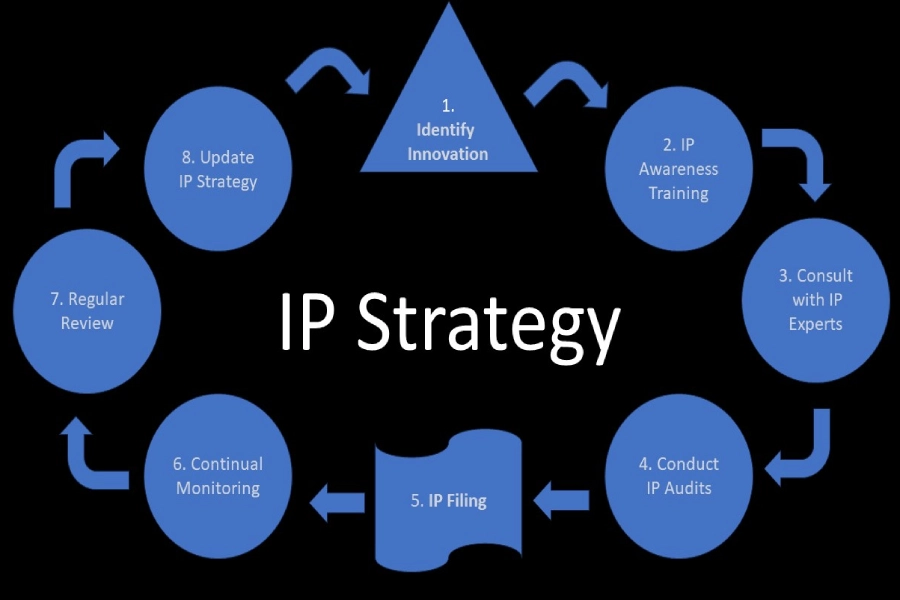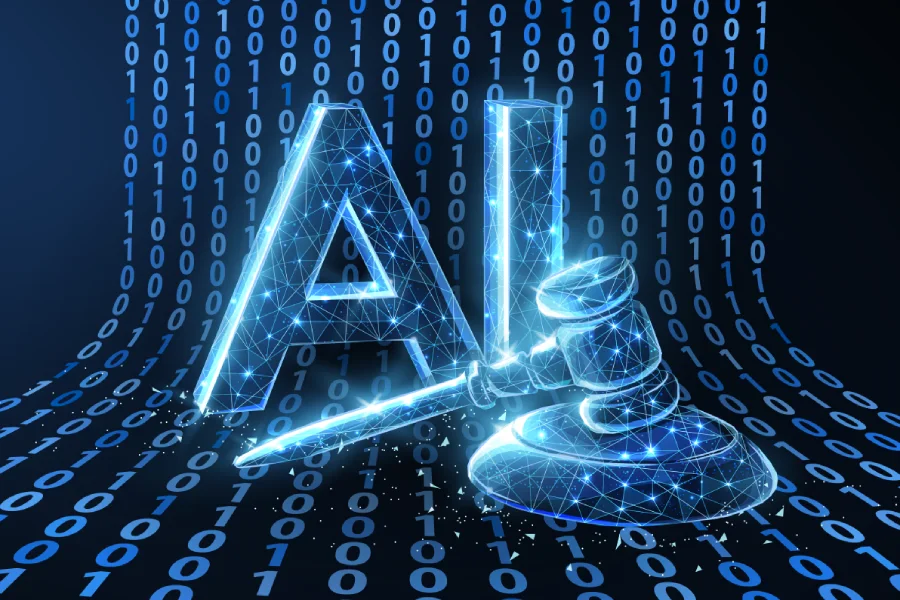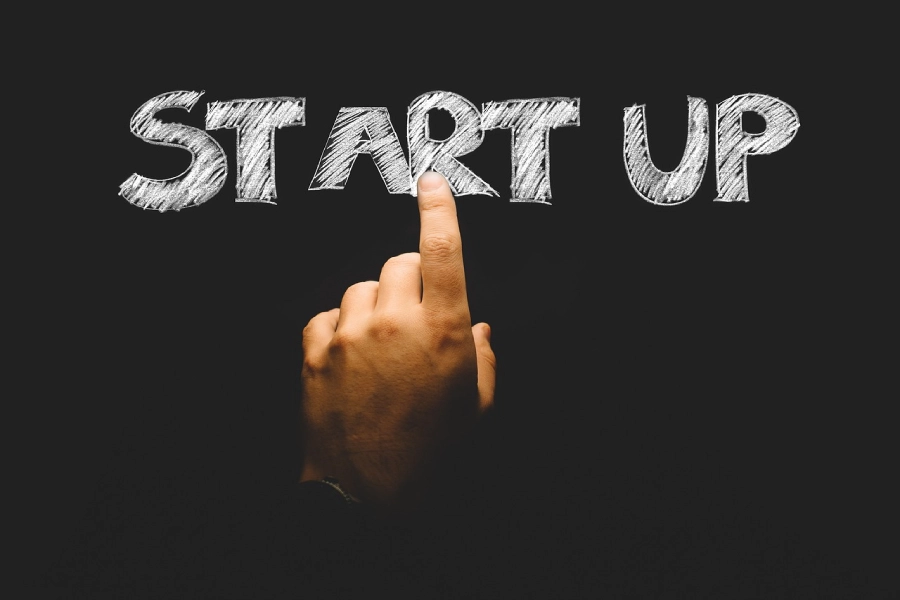The U.S. innovation economy stands at a decisive crossroads in 2025.
The confluence of aggressive Generative AI advancement and strict new regulatory guidance including major shifts at the USPTO and the U.S. Copyright Office has fundamentally changed the rules for technology creation.
For startups, Intellectual Property (IP) can no longer be outsourced or delayed; it is the primary asset that VCs now evaluate.
This comprehensive analysis moves beyond a simple listing of new rules. It provides founders and legal counsel with a tactical roadmap to navigate this high-stakes environment.
We explore how to strategically leverage the expanded Track One program, adhere to the strict new § 101 eligibility standards, and build necessary legal guardrails against unprecedented AI copyright liability.
In this landscape, resilience is defined by proactive compliance and strategic filing not just sheer volume. Understand the new legal cost of doing business to transform risk into a definitive, defensible market lead.

Overview of the New IP Regulations
The U.S. innovation ecosystem is entering a period of significant volatility and opportunity, driven primarily by the rapid advancement of generative artificial intelligence (AI) and reactive policy adjustments at the federal level.
For startup founders, this dynamic environment means that foundational intellectual property law for startups must evolve from a tactical checklist item into a core strategic business function.
The financial and legal risks associated with non-compliance, particularly in AI development, have never been higher.
For founders building the next generation of technological platforms and the venture capital firms funding them, ignorance of these impending legal shifts represents unmitigated operational and financial risk.
Securing foundational intellectual property (IP) quickly and correctly is now central to effective U.S. innovation policy.
The shifts impacting founders in 2025 are quadripartite, touching both patents and copyrights, administrative policy and case law :
- Administrative Speed: The U.S. Patent and Trademark Office (USPTO) is increasing capacity for accelerated prosecution through its Track One program.
- Patent Eligibility Scrutiny: There is a renewed, strict administrative focus on the subject matter eligibility standard under 35 U.S.C.
101, especially for software and AI patents.
- Design Patent Flexibility: The Federal Circuit has introduced a more flexible, potentially more challenging obviousness standard for design patents.
- Generative AI Liability: The U.S. Copyright Office (USCO) has established high legal hurdles for the fair use defense in AI training, dramatically increasing copyright risk.
The administrative goal of the USPTO, particularly through its acceleration programs, is to reduce patent pendency and promote speed a positive signal for U.S. innovation policy. However, this efficiency is counterbalanced by a simultaneous push for quality control, particularly in contentious areas where patents are frequently invalidated by courts, such as software and machine learning. Consequently, startups will receive faster decisions, but non-eligible applications will face faster, stricter rejections, demanding meticulous pre-filing legal strategy.

Why 2025 Is a Turning Point for Startup Innovation
Accelerated Protection: The Boost to USPTO Track One
Speed in securing patent protection is paramount for early-stage companies, directly influencing investor confidence and competitive advantage.
Recognizing this need, the USPTO significantly expanded its Prioritized Examination Program, commonly known as Track One.
Effective July 8, 2025, the USPTO increased the annual limit on accepted Track One requests from 15,000 to 20,000.
This 33% increase in capacity provides a greater opportunity for startups to leverage the program’s most crucial strategic benefit: obtaining a final disposition on utility or plant applications within approximately twelve months of filing.
This expedited timeline drastically reduces the years-long uncertainty often associated with standard patent prosecution, securing the competitive moat necessary for major milestones like Series A funding or key partnership agreements.
Track One is available upon payment of a prioritized fee at the time of filing a complete, original utility or plant application.
Clarity and Uncertainty in Patent Eligibility (![]() 101)
101)
While the U.S. Congress has yet to pass definitive legislation concerning 35 U.S.C. 101 patent eligibility, the administrative landscape has been shaped by direct USPTO guidance.
Patent eligibility, which determines if an invention covers patentable subject matter (excluding abstract ideas, laws of nature, or natural phenomena), remains contentious, especially for software and biotech innovations that form the bedrock of the modern startup economy.
On August 4, 2025, Deputy Commissioner for Patents Charles Kim issued a memorandum to Technology Centers (TCs) 2100, 2600, and 3600, which are the primary hubs for processing AI, machine learning, and business method patents.
While the memo expressly states it is “not intended to announce any new USPTO practice or procedure,” it serves as a critical reminder to examiners regarding consistent application of the framework (MPEP 2106).
This internal guidance is the functional administrative substitute for comprehensive patent law reform 2025.
It provides specific direction that impacts how AI claims are drafted and examined.
The memo reinforces the crucial distinction in Step 2A Prong One between a claim that merely involves a judicial exception and one that recites it.
For instance, the USPTO reaffirmed that describing “training the neural network in a first stage” (Example 39) generally does not recite a judicial exception, whereas explicitly referring to mathematical calculations by name (Example 47) typically does.3
Furthermore, examiners were cautioned against overextending the “mental process” category of abstract ideas to include “claim limitations that cannot practically be performed in the human mind”.3 This targeted guidance signals that the USPTO is proactively trying to reduce the high rate of eligibility rejections and subsequent court challenges for AI and intellectual property inventions by ensuring internal examiner consistency.
Startups must adhere strictly to the memo’s guidance, focusing claims on specific technical improvements (Step 2A Prong Two) and practical application rather than abstract concepts.
Claim drafters who leverage this administrative roadmap are positioned to successfully navigate the eligibility gauntlet and utilize the accelerated 12-month timeline offered by Track One.

The Cost of Patents and Compliance Burdens
Leveraging Micro Entity Status and Fee Reductions
Financial prudence is essential for capital-constrained startups.
The USPTO provides significant fee reductions for qualifying entities, a policy that was recently updated to benefit a wider array of growing companies.
Effective September 9, 2025, the maximum qualifying gross income for Micro Entity status increased from $241,830 to $251,190.
Micro entities qualify for a 75% reduction on most USPTO fees, including basic filing, search, examination, and maintenance fees.
This financial relief is substantial, particularly when coupled with the accelerated Track One program. As of January 19, 2025, the priority examination fee for a Micro Entity is approximately $902, offering a critical low-cost path to rapid protection compared to the $4,515 fee charged to large entities.
This strategic cost management allows founders to treat IP investment with greater efficiency.
Startups can secure a provisional patent, which provides a 12-month window to test market fit and defer the high costs of a full application.
The Micro Entity fee for a provisional application is as low as $65.
This capital preservation strategy allows the startup to raise initial funding during the 12-month period and then use the subsequent capital injection to fund the accelerated Track One process upon conversion.
This sequence optimizes both IP risk mitigation and financial liquidity.
The table below summarizes the key administrative and cost-related policies that define the intellectual property law for startups landscape in 2025.
Table Title: Strategic USPTO Cost and Acceleration Summary (2025)
| USPTO Policy Change (2025) | Effective Date | Impact on U.S. Startups & Founders | Strategic Takeaway |
| Track One Prioritized Examination Limit Increase (15,000 to 20,000) | July 8, 2025 2 | Greater access to the 12-month accelerated examination pathway.2 | Prioritize critical utility patents for Track One filing to secure core IP before competitors. |
| Micro Entity Maximum Qualifying Gross Income Increase (to $251,190) | September 9, 2025 10 | Allows a broader range of early-stage, successful founders to qualify for 75% fee reduction. | Re-evaluate Micro Entity eligibility status immediately for fee savings across all patent types and stages. |
| Track One Micro Entity Priority Fee | January 19, 2025 12 | $902 fee (lowest cost path to rapid examination). | Highly cost-effective strategy for securing foundational patents quickly while preserving capital for R&D. |
The Shift in Design Patent Obviousness
Design patents, utilized by startups to protect product aesthetics, graphical user interfaces (GUIs), and unique product configurations, face increased scrutiny following a landmark decision by the Federal Circuit. The en banc decision in LKQ Corp. v. GM Global Tech. Ops. LLC 4 marks a significant departure from decades of precedent regarding how design patent obviousness is assessed under 35 U.S.C. 103.
The court explicitly overruled the rigid Rosen-Durling test, which required a primary prior art reference to be “basically the same” as the claimed design.
Instead, the Federal Circuit adopted the flexible approach to obviousness established by the Supreme Court in KSR Int’l Co. v. Teleflex Inc.
and applied the four factors set forth in Graham v. John Deere Co. to design patents.
This shift significantly increases the difficulty of securing and defending design patents.
Competitors can now more easily challenge a startup’s design patent by combining disparate pieces of prior art if an ordinary designer would have been motivated to do so.
This introduces an element of unpredictability to validity assessments.
Startups must therefore elevate the rigor of design patent protection to the same level of due diligence traditionally reserved for utility patents, conducting a broader, more flexible Freedom to Operate (FTO) analysis during the design phase to avoid running afoul of existing or combinable prior art.
This is a critical component of startup legal compliance concerning industrial design and interface protection.

AI and Copyright: The Legal Gray Area
The most severe new legal challenges for technology entrepreneurs in 2025 involve generative AI, spanning both patent inventorship and copyright liability.
The regulatory bodies have drawn clear lines, eliminating several key legal defenses previously relied upon by AI developers.
The Assault on Transformative Use: Copyright Office Guidance
The U.S. Copyright Office (USCO) released Parts 2 and 3 of its comprehensive report on Artificial Intelligence in 2025, directly addressing the scope of copyright in AI-generated works and the use of protected materials in AI training.
The USCO guidance fundamentally heightens infringement risk for developers.
The May 2025 report concluded that using copyrighted works to train AI models may constitute prima facie infringement of the right to reproduce those works.
More critically, the USCO explicitly rejected two central fair use defenses frequently advanced by developers :
- Rejection of Non-Expressive Purpose: The argument that AI training is inherently transformative because the purpose is not expressive (it is computational) was deemed “mistaken.” The USCO argues that models absorb the “essence of linguistic expression,” meaning the patterns of arrangement at the sentence, paragraph, and document level.
- Rejection of the Human Learning Analogy: The analogy that AI training is comparable to human learning fails because humans retain imperfect impressions “filtered through their own unique personalities,” while AI training involves the creation of perfect copies “with the ability to analyze works nearly instantaneously”.
This guidance severely weakens the fair use defense for commercial generative AI models.
Furthermore, the USCO supports the “strong argument” that the AI model’s weights themselves may infringe the reproduction and derivative work rights if the output is substantially similar to the training data input.
This means liability may be embedded in the core product, not just in the subsequent output.
The USCO analysis also broadens the definition of market harm (the fourth fair use factor) to include “market dilution and competition in the same class of works”.
This shift means that generating new works in the same style, genre, or category as copyrighted material can now be considered a tangible market harm, even if the output is not identical to the input. This broadened interpretation heavily pressures developers toward voluntary licensing solutions, as the fair use defense for competitive models has been substantially weakened.
To mitigate this extreme litigation exposure, the USCO confirmed that implementing technical guardrails to prevent or minimize the creation of infringing outputs weighs significantly in favor of a fair-use defense.
Moreover, the USCO noted that the knowing use of pirated or illegally accessed works as training data weighs against a fair-use defense.
This necessitates a fusion of legal counsel and data governance, making data provenance and documented, robust legal audits of foundational model training methodologies an essential startup legal compliance requirement for any company operating in the AI and intellectual property space.
Defining Human Ingenuity: Inventorship and Patentability
Concurrent with the copyright guidance, the USPTO has provided clear policy regarding AI’s role in patent inventorship. Guidance established in 2024 and reinforced in 2025 mandates that inventorship is strictly limited to natural persons.15
While an AI system may perform complex functions that, if performed by a human, could constitute inventorship, AI cannot be named as an inventor; it must be treated as a sophisticated tool.
Patent applications for AI-assisted inventions must name the natural person(s) who provided a “significant contribution” to the invention, adhering to established legal factors.
This policy reinforces the statutory principle that patents function to incentivize and reward human ingenuity and investment.
For founders, this means meticulously documenting human intervention and contribution at every stage of the inventive process.

Expert Opinions: What Founders Should Do Now
Investor Readiness: IP Due Diligence in 2025
The rising complexity and risk profile of intellectual property means that IP hygiene is now a prerequisite for securing venture capital funding, not an afterthought.
Venture Capital Due Diligence checklists now categorize Technology and Intellectual Property Evaluation as having “High” implementation complexity, requiring deep technical expertise.7
Founders must anticipate that VCs will engage their own technical advisors or require a formal code audit, necessitating preparedness for a deep dive into the technology stack.
To de-risk the investment, founders should proactively conduct a thorough IP landscape analysis, known as Freedom to Operate (FTO). Demonstrating a comprehensive awareness of existing patents and non-infringement minimizes the risk of “costly litigation down the road,” which is a primary fear for investors.
Furthermore, rigorous documentation of all open-source dependencies and their associated licensing terms is mandatory. Failure in technical startup legal compliance is now a fundamental financial barrier to capital acquisition.
Strategic Patent Filing: Fast, Focused, and Flexible
In light of the expanded Track One program and the heightened scrutiny under 35 U.S.C. 101, founders must adopt a highly strategic patent filing approach:
- Utilize Provisional Filings Strategically: Smart use of provisional patents (low cost, potentially as low as a $65 Micro Entity fee 11) secures a priority date for the invention for 12 months. This allows the startup to dedicate the year to validating market fit and raising the seed capital necessary to fund the more expensive prosecution process, deferring the significant examination fees.13
- File Narrowly and Strategically: Focus patent applications on the “core innovation”the specific technical solution that truly differentiates the company.
- This concentrated strategy maximizes the impact of limited IP budgets and increases the chance of successfully overcoming the stricter
101 eligibility threshold established by the Kim Memo guidance.
- Leverage the Track One Window: Founders should reserve the expanded Track One capacity (now 20,000 requests) specifically for mission-critical utility patents that define the company’s technological moat.
- This acceleration drastically reduces the time-to-market advantage for competitors and provides concrete, defensible assets crucial for investor presentations.
The optimal strategy for intellectual property law for startups in 2025 is to combine the low-cost priority date protection offered by the provisional filing with the accelerated prosecution guarantee of Track One, paid for only after market validation and initial funding are secured.
Final Thoughts: Building IP Resilience
The 2025 legal environment presents U.S. entrepreneurs with a dichotomy: administrative policies offer unprecedented pathways to speed and cost-efficiency through Track One and Micro Entity status, but this efficiency is coupled with a sharp increase in substantive legal complexity concerning patent law reform 2025 (eligibility) and AI and intellectual property (copyright liability).
IP resilience is defined not by the number of patents filed, but by the rigor of compliance, the strength of documentation (particularly regarding inventorship and AI training data provenance), and the strategic financial management of patent assets.
For U.S. innovation policy to succeed, entrepreneurs must understand that IP is no longer a peripheral legal expense but the central mechanism for competitive differentiation and successful fundraising. Startups that proactively treat their IP portfolio as a core business asset, subject to continuous legal audit and strategic acceleration, will be those best equipped to thrive in this new high-stakes environment.
FAQ
How does the USPTO’s Track One program benefit my startup specifically in 2025?
The USPTO increased the annual limit for Track One Prioritized Examination to 20,000 requests, starting July 8, 2025.
This expansion provides startups with greater access to a program that guarantees a final disposition (Notice of Allowance or Final Office Action) within approximately twelve months. This accelerated timeline is vital for demonstrating patent protection to potential investors during crucial early-stage funding rounds.
What is the “Kim Memo” and why does it matter for my AI/ML patent application?
The Kim Memo, issued in August 2025, is a directive to USPTO technology centers that handle AI and machine learning applications.3 It clarifies examiner guidance on 35 U.S.C. 101 patent eligibility, reminding examiners to focus on whether claims recite an abstract idea versus merely involving one. It cautions against overly broad rejections based on “mental processes”.
This matters because it provides a clearer roadmap for drafting AI claims that are more likely to be deemed eligible, facilitating successful prosecution under patent law reform 2025 standards.
Will my AI-generated software code be eligible for copyright protection?
The USPTO and the US Copyright Office maintain that inventorship and authorship are limited to natural persons.
While AI-assisted inventions can be protected if a human provided a “significant contribution,” purely AI-generated software code or artwork without substantial human creative input is generally ineligible for protection under U.S. law.
What steps should we take now regarding our AI training data to avoid major copyright litigation?
Startups must integrate legal diligence with data governance.
Given the USCO’s May 2025 guidance that training models on copyrighted works may constitute prima facie infringement and that model weights themselves may be infringing , startups must audit and document their training data provenance. Implementing technical guardrails to prevent infringing output generation and ensuring that training data is not sourced illegally are now essential steps in startup legal compliance.
With the change to the Micro Entity income limit, how much can my startup save on IP costs?
Effective September 9, 2025, the maximum qualifying gross income for Micro Entity status increased to $251,190.
Qualifying Micro Entities receive a 75% reduction on most USPTO fees, including the Track One priority fee, which is reduced to approximately $902 from the standard large entity fee of $4,515. This represents substantial savings crucial for early-stage companies.
How has the LKQ v. GM decision changed how we should protect our product’s industrial design or user interface (UI)?
The Federal Circuit’s decision in LKQ Corp. v. GM Global Tech. Ops. LLC overruled the rigid Rosen-Durling test, adopting a more flexible obviousness standard for design patents based on the Graham factors. This means it is easier for competitors to challenge a design patent by combining disparate pieces of prior art.
Founders must now conduct a broader FTO analysis when designing UIs or product aesthetics to strengthen copyright protection for entrepreneurs extending into design.
What is the single most important IP compliance step VCs are looking for in 2025 due diligence?
Venture capital firms prioritize proactive IP hygiene and demonstrated FTO analysis.
Founders must be able to prove, through documentation and code audits, that they have secured their core technology, are aware of the existing patent landscape, and are not infringing on competitor IP. This proactive measure mitigates the risk of costly future litigation, which is a major red flag for investors.

